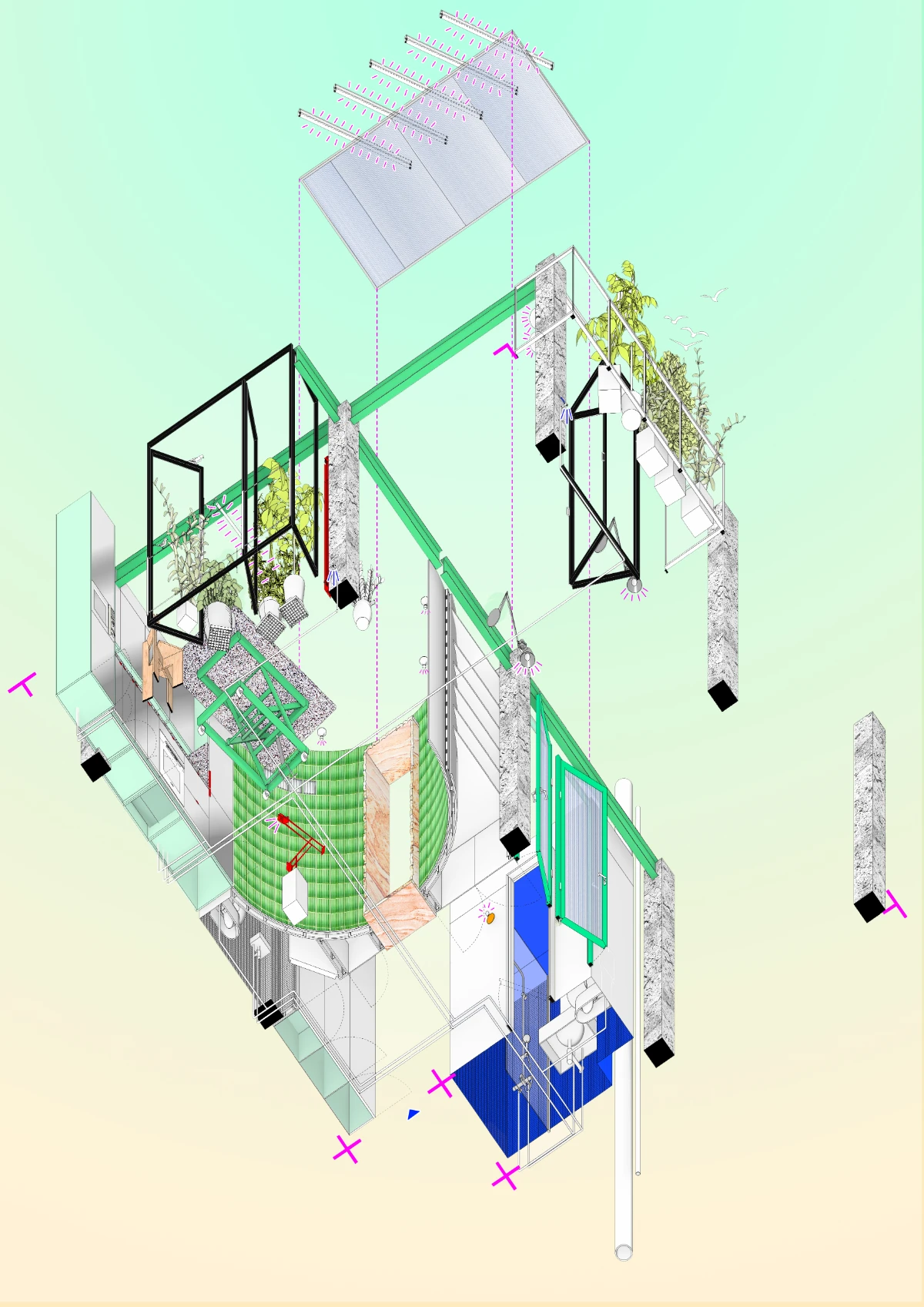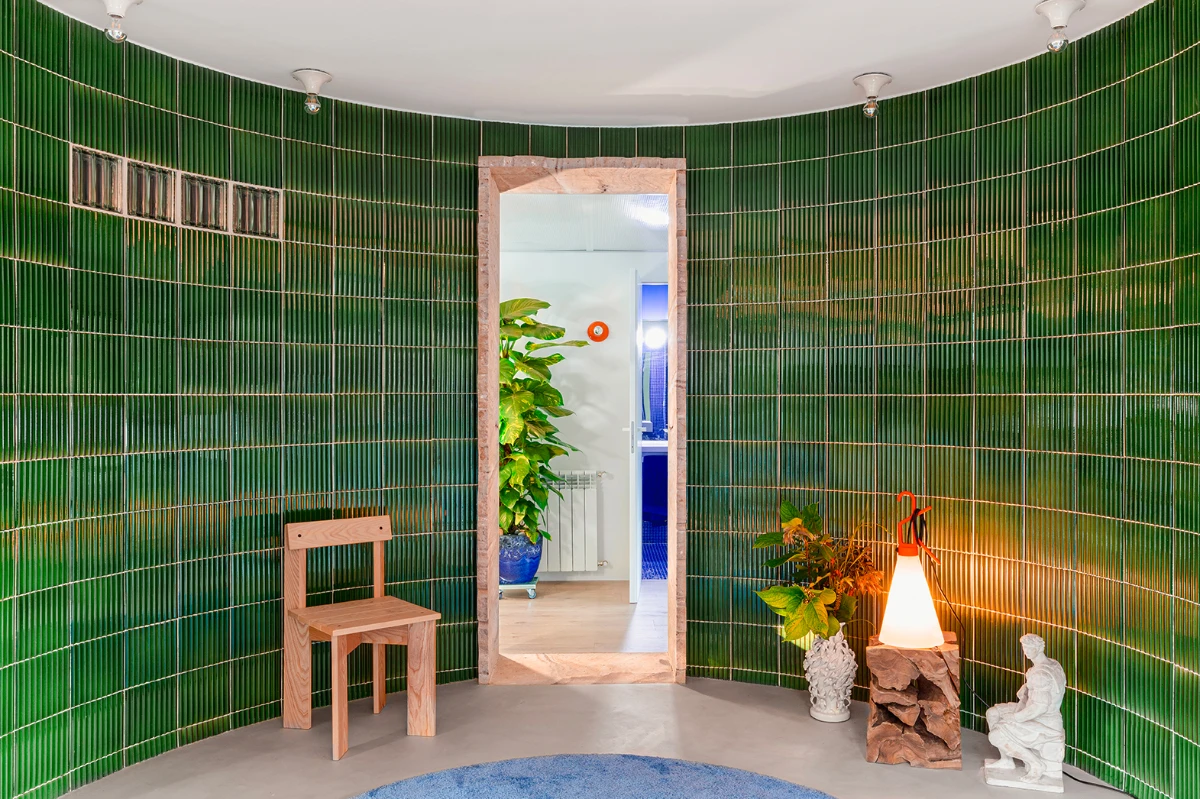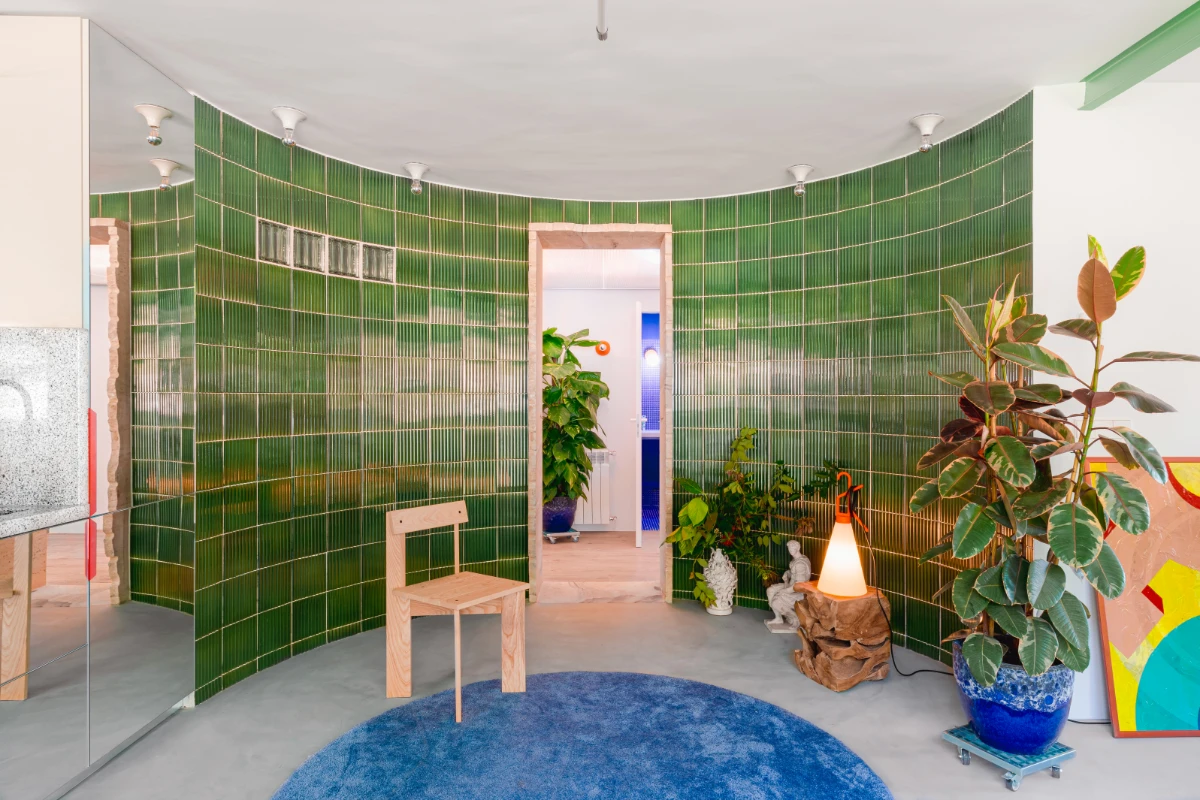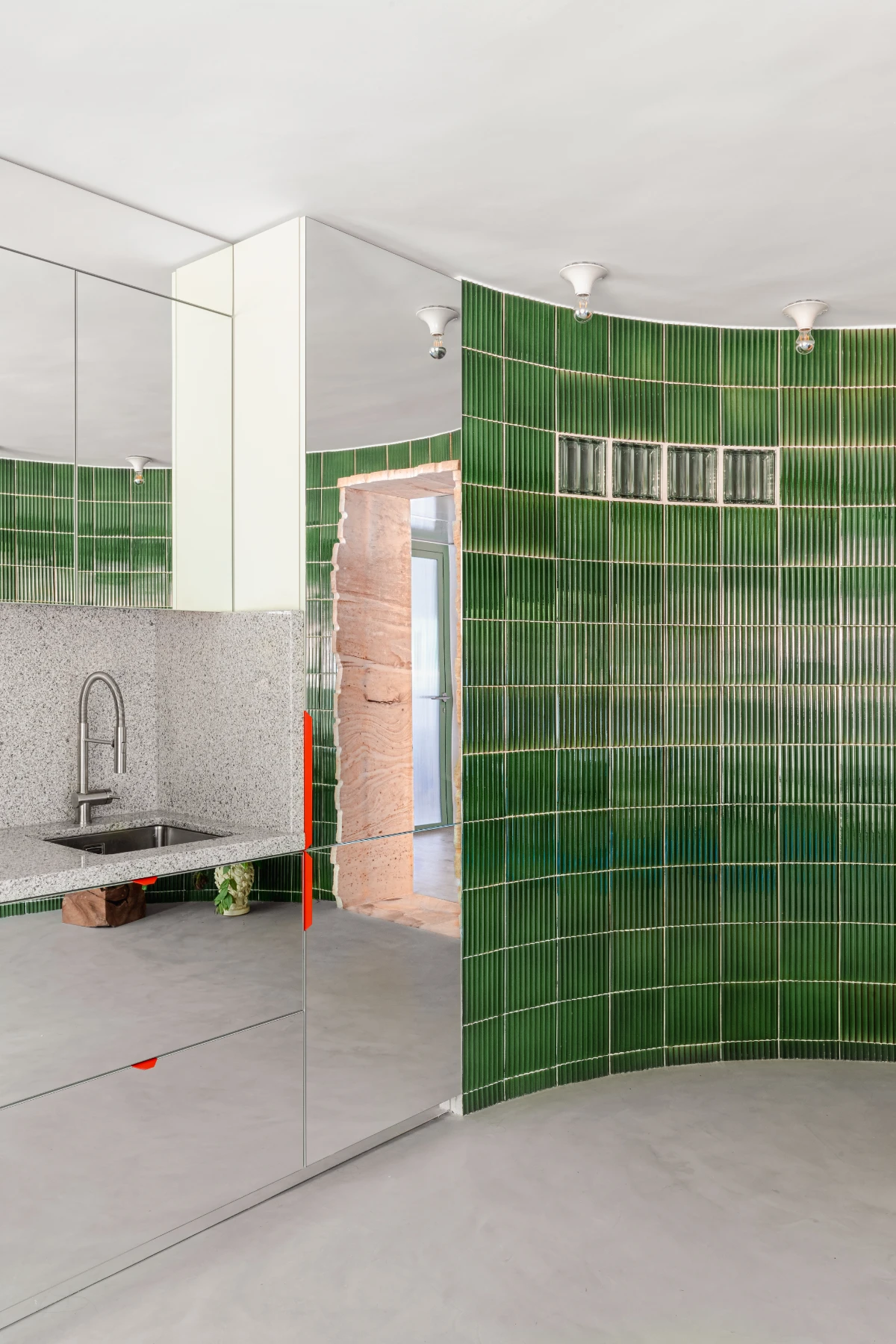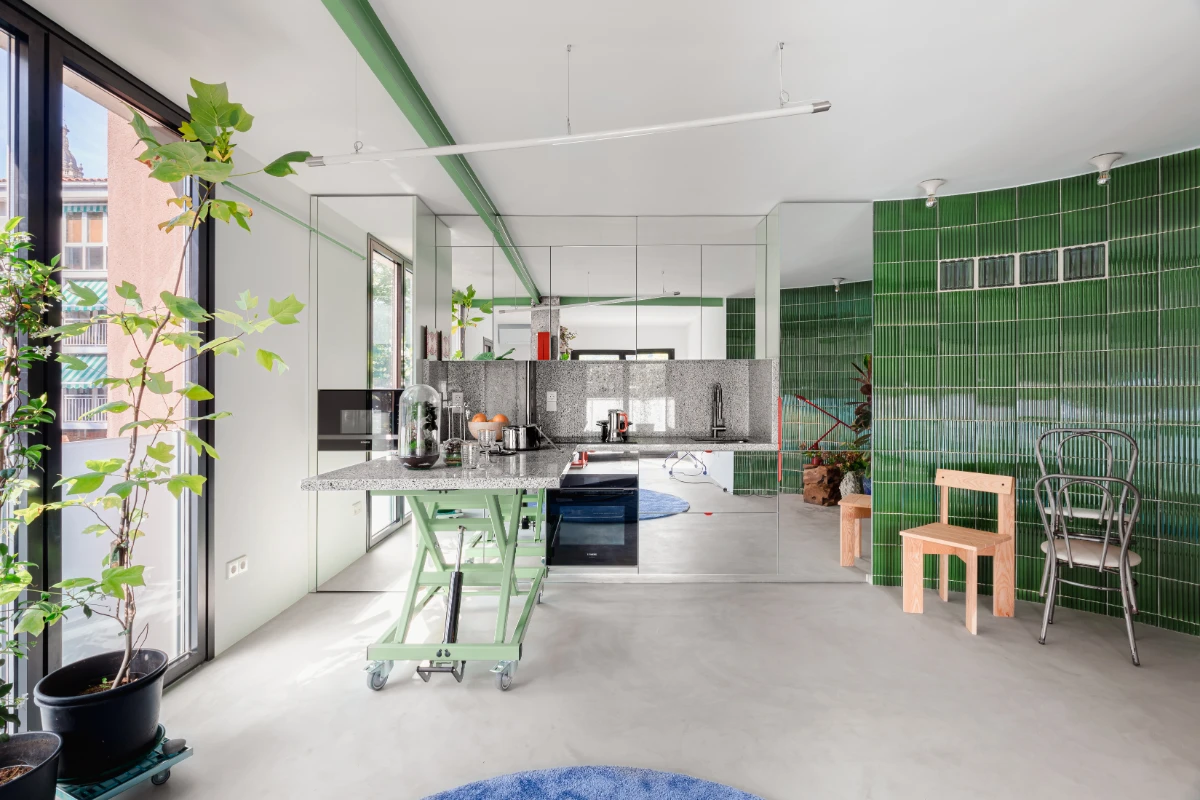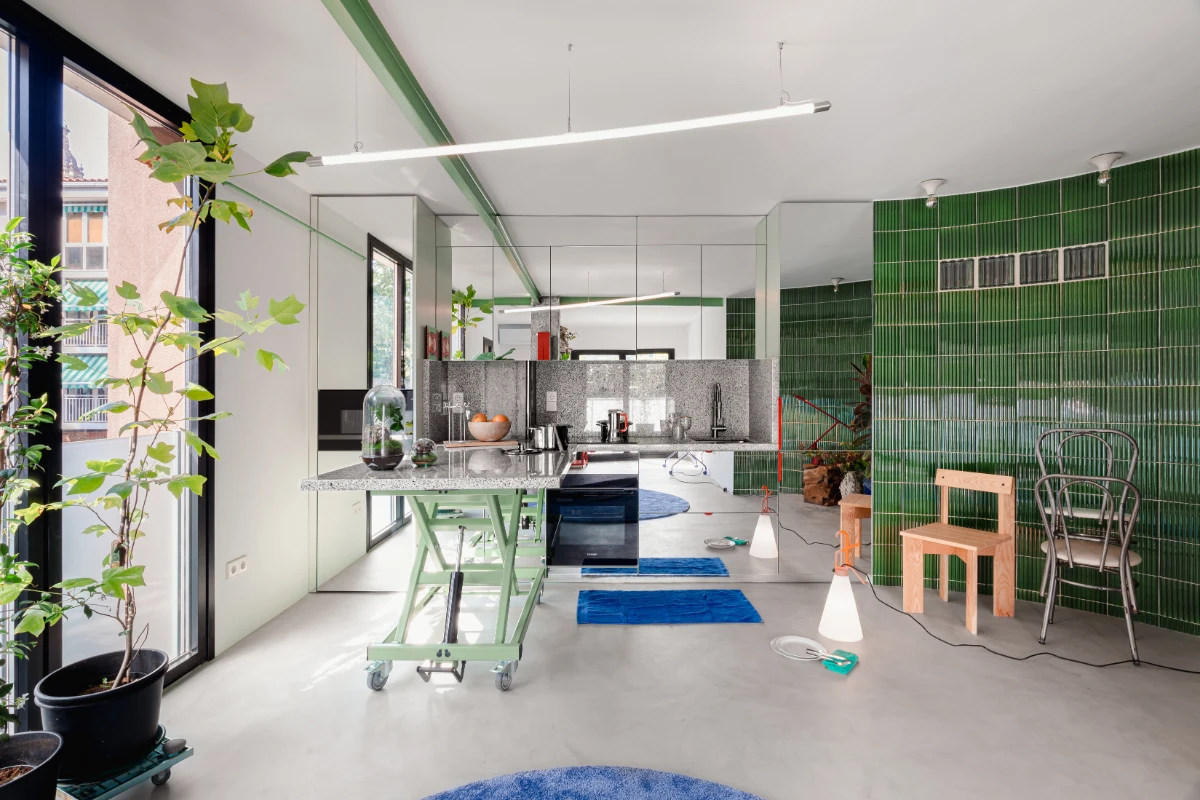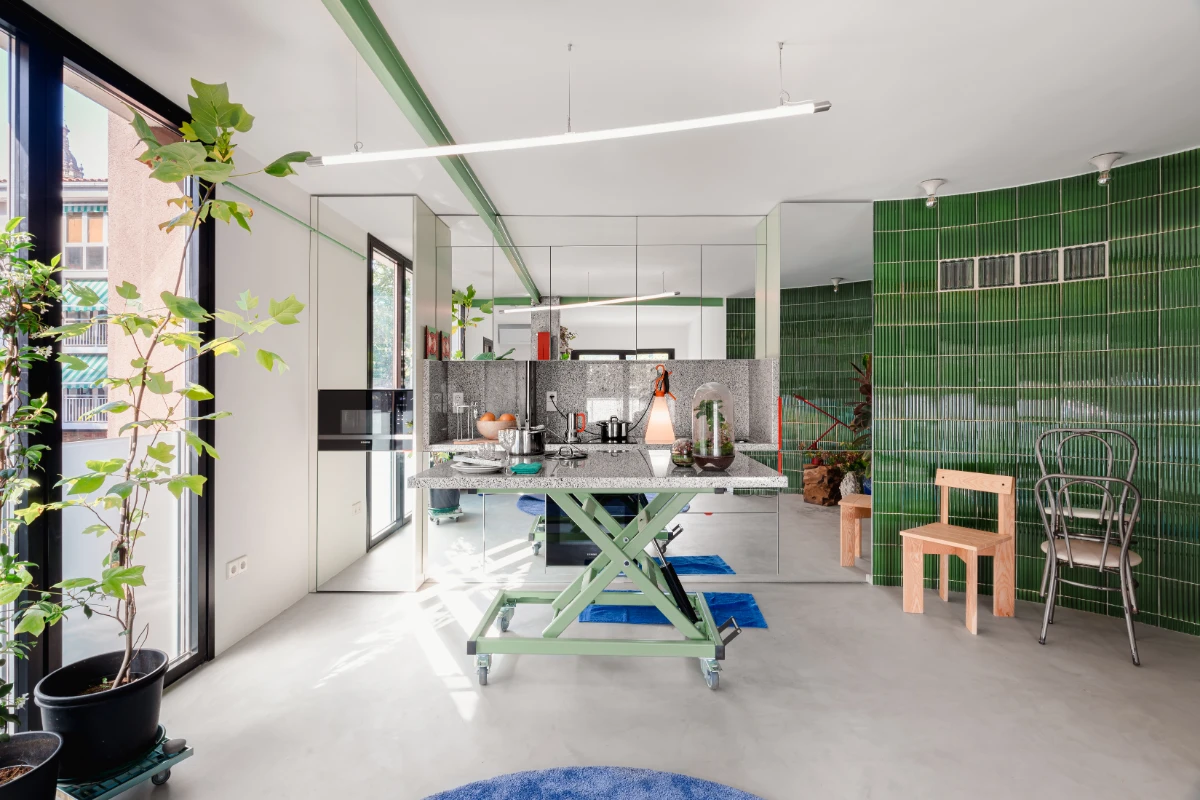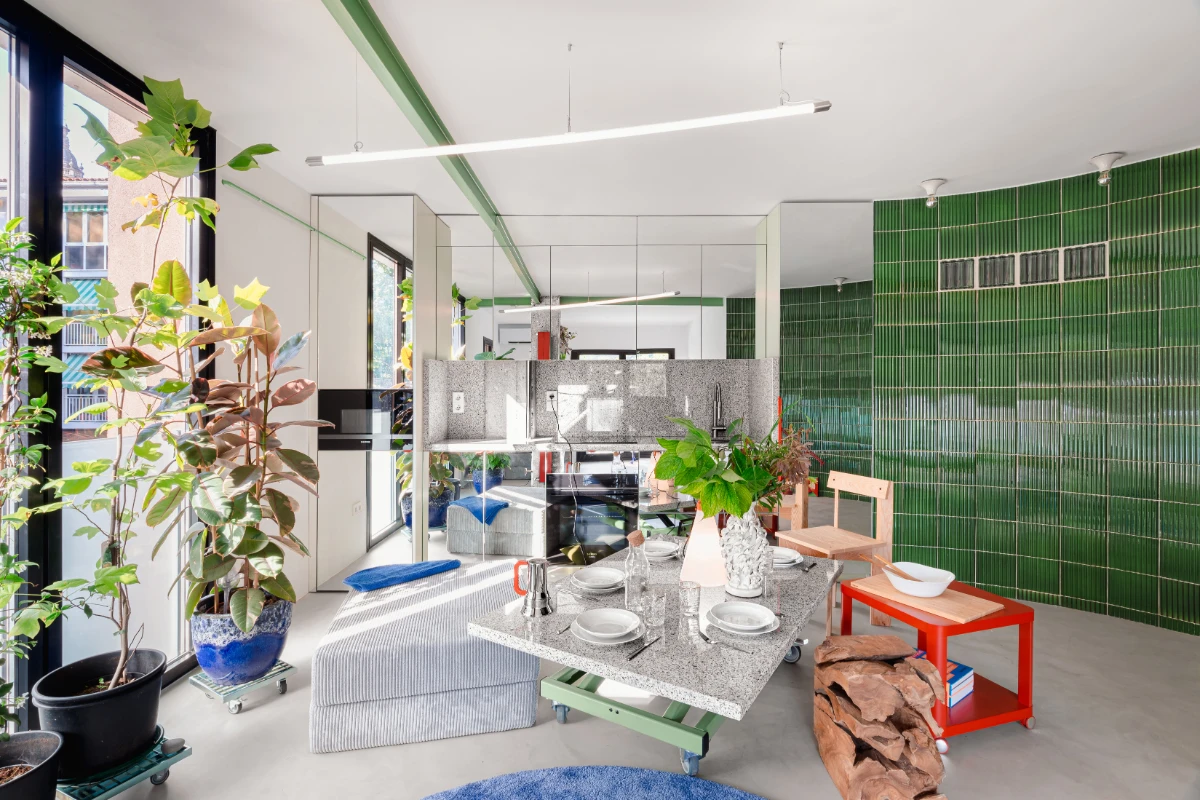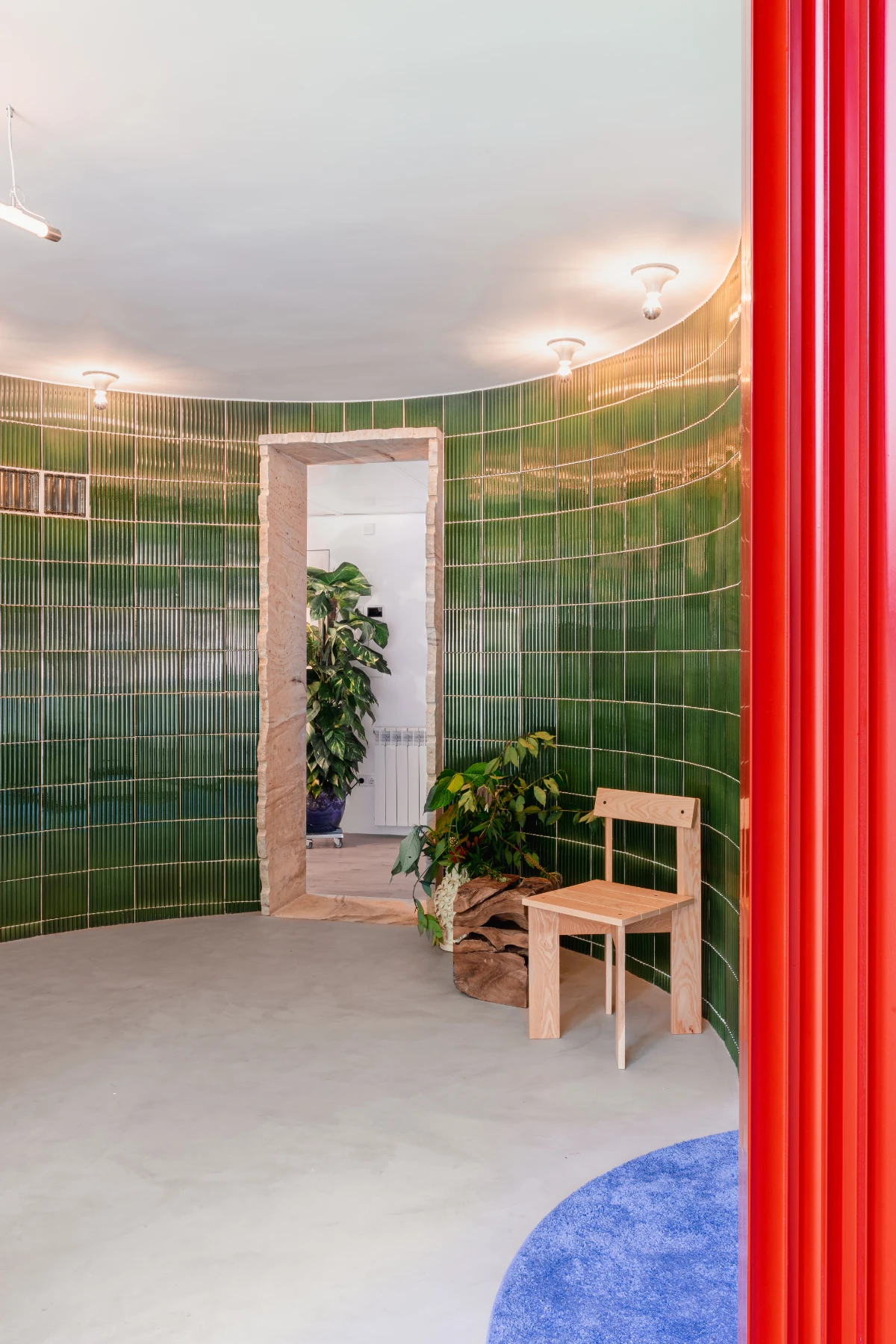Unplanned Domestic Prototype [PROT/USRBL/SE08] critically explores the transformative potential of a 60 m² apartment in a building constructed in 1966, as part of Spain’s post-war 1959 Stabilization Plan. This plan prioritized minimal, standardized, compartmentalized housing to optimize “efficiency,” adhering to the nuclear family model. These apartments, marked by rigid, fixed spaces, reflected the ideals of the time, but the design is now limiting in the context of modern domestic needs.
In response, Unplanned Domestic Prototype [PROT/USRBL/SE08] challenges these standardized principles and reimagines how living spaces in the 21st century can evolve. The project transforms the apartment into a flexible, multifunctional environment, adaptable to the changing needs of contemporary life. Rather than reinforcing the static nature of the original design, it integrates architectural possibilities that celebrate diverse social interactions, local traditions, and the fluidity of modern domesticity. This approach advocates for environments that can evolve over time, fostering pluralistic coexistence.
A key intervention in the project is a glazed ceramic curved wall, designed with a 175-degree arc. This wall disrupts the original rigid layout and functions as both a spatial organizer and a material statement deeply resonant with local traditions. It redefines domestic storage conventions, integrating cupboards, cabinets, shelves, and bathroom fixtures, all maximizing the use of available space. At one vertex, the wall merges with a mirrored showcase that cleverly conceals conventional appliances, further enhancing the apartment’s sense of openness and fluidity.
The use of San Sebastián sandstone is another defining feature of the project. This material, deeply tied to the local geological and cultural context, provides a tactile and visual connection to the surrounding landscape. Rather than using imported materials like marble, the project elevates this local stone, shaped by regional extraction methods, into a central design element. Its raw, unpolished texture invites reflection on material sourcing and the labor-intensive processes behind global supply chains. The stone’s visible layers also serve as a physical reminder of the local land and its geological history.
The project embraces the environment further by incorporating locally sourced, flexible design elements. An adjustable-height island made from repurposed national granite and materials from local carpentry workshops reinforces adaptability within the space. These elements can be moved to accommodate various social interactions, fostering collaboration. Additional materials, such as reused tree roots for stools, recycled aluminum tubes from a local restaurant for chairs, and steel joinery from nearby metal industries, further emphasize the project’s commitment to sustainability and the productive landscape.
Ultimately, Unplanned Domestic Prototype [PROT/USRBL/SE08] responds to contemporary housing challenges, offering a provocative vision for flexible domesticity. The project does not offer a definitive solution but rather a framework for reconsidering how we inhabit spaces today. Through its focus on local materials and their historical narratives, the project invites reflection on the political, economic, and environmental forces that shape our built environment.

